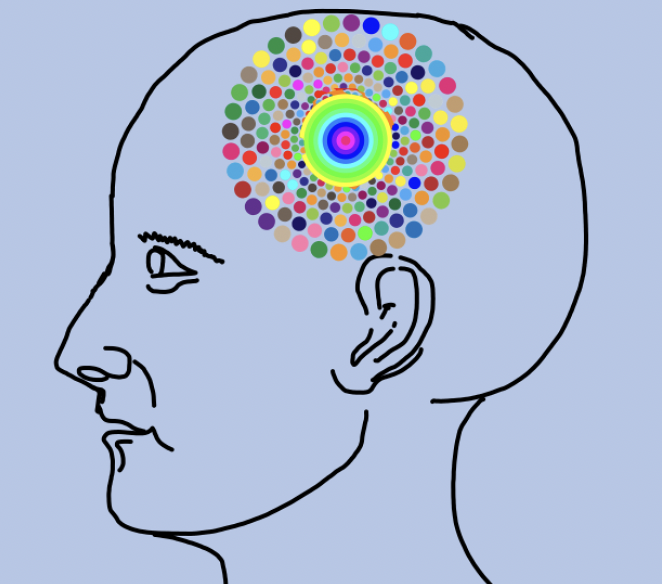Me, myself, and anxiety
13/05/2022

Then and now
I remember the moment very well – I was sat at a desk talking to my boss, pointing out the key elements of a strategic plan. I was in quite a stressful job, but I’d handled the stress in that role and many things in my life over the years that hadn’t caused the reaction that I then had. Without any kind of warning, or so it seemed, I noticed tears rolling down my face; my hands started to shake, my vision became tunnelled, and I was going through waves of temperature fluctuation. He asked if I was all right. I said: “I don’t think I am.”
That was the beginning of what was much later diagnosed as General Anxiety Disorder (GAD). Over the years I tried to hide the fact that I had anxiety. There is a tradition amongst many of us of ‘putting a face on’. Trying to conceal something that affects us and pretend that it doesn’t. Perhaps even feeling a little ashamed about this ‘thing’ that affects us and takes away ‘normal’.
I have become more accepting of my anxiety and concluded that I must live with it – moderating it with medication and Cognitive Behaviour Therapy (CBT). I still get work done in my job, I am still (I hope) as industrious and conscientious as I have ever been. I find relief in being more open about the condition and there is liberation in being able to say to people “I have an anxiety disorder.”
The reaction to this is generally very supportive and many people have contacted me to share their experiences of anxiety. Whether to be open about it is a choice that individuals should make – in my case it was the right one as my colleagues have gained a better understanding of the working of me.
Defining anxiety
The American Psychology Association defines anxiety as an emotion characterised by feelings of tension, worried thoughts, and physical changes (APA, 2022). This is a useful definition, although like all attempts to define something it is a simplification of what can be a complex subject.
Having anxiety at some point in life is a natural part of being human. Evolution has provided us with a useful mechanism for making judgments about safety and preservation. We would probably think it a bit strange if we didn’t feel a little anxious about a job interview, a first date or speaking in public. The difference with an anxiety disorder is that feelings of dread, panic, threat, and impending tragedy can become overwhelming.
Types of anxiety
Anxiety is generally categorised in two ways:
Situational anxiety is a different fear from everyday fear and is often disproportionate or unrealistic.
Phobic anxiety is an overwhelming fear of a particular place, situation, feeling or animal.
Situational anxiety transfers to phobic anxiety with the avoidance of a situation.
Bourne (2020, p.6) comments that the emphasis of anxiety is more internal than external and describes a reaction to ‘a vague, distant, or even unrecognised danger’. Reaction is in three combined areas:
- Physiological symptoms include heart palpitations, sweating, shortness of breath, hot flashes, or chills. In some extreme cases it can manifest in twitches.
- Behavioural aspects include freezing and failing to react, poor understanding and ineffective communication and, inability to manage everyday situations.
- Psychological symptoms include feelings of detachment, apprehension, or fear of death. It represents a combined feeling of no longer being in control.
Attempts to recover from anxiety must address these three areas.
Sometimes just the thought of a situation can drive anxiety. This is called anticipatory anxiety. An example might be the need to give a work presentation (public speaking anxiety). As the presentation approaches the individual can become consumed with concern. Another type is spontaneous anxiety where, for example, an unexpected situation occurs, and the onset of the anxious state is rapid; although it can peak quickly and decrease over a few hours.
Some people describe feeling ‘on edge’ and a sensation of threat without it being connected to a specific situation or ‘thing’; this is called Free Floating Anxiety. Research is continuing on the causes, but it is thought to be triggered by events such as dysregulation of neurotransmitters; previous experiences such as bullying, harassment, grief, vitamin imbalances, poor self-esteem, stress; changes in hormone levels; a poor diet or exercise regime.
Panic attacks
You may have heard people describe a situation as causing them a panic attack. Sometimes it is said humorously, but a real panic attack can be a terrifying and disturbing event that arises suddenly. They tend to last for a few minutes and are accompanied by symptoms such as shortness of breath, heart palpitations, disorientation and dizziness, shaking/trembling, twitches, temperature fluctuation, tingling or numbness in the extremities, chest pain and discomfort, fears of mortality, depersonalisation, nausea, and feelings of asphyxiation. At least four of these symptoms will be present in a full-blown panic attack.
Other anxiety disorders
In a short blog of this nature, it is not possible to list all variants or the spectrum of them. But it is worth noting that there are other disorders that are generally under the heading of anxiety. These include agoraphobia (‘fear of open spaces’), Social Anxiety Disorder (fear of embarrassment or humiliation in front of people), Obsessive-Compulsive Disorder (OCD) (uncontrollable, reoccurring thoughts (obsessions) and/or behaviours (compulsions), Post Traumatic Stress Disorder (PTSD) (disabling psychological symptoms following a traumatic event), Substance induced anxiety disorder (where generalised anxiety or panic attacks are direct physiological effects of substance (drug, medication) exposure.
Treatment
If you believe you have one of the conditions, I have mentioned above my strongest recommendation is that you make an appointment with your General Practitioner to discuss it. They will be able to advise on the correct course of action, whether that is Cognitive Behaviour Therapy, self-help courses, relaxation techniques, medication or referral to a specialist.
Useful sites:
https://www.nhs.uk/mental-health/conditions/generalised-anxiety-disorder/treatment/
Reference: Bourne, E. J. (2020). The Anxiety and Phobia Workbook. New Harebinger Publications: Oakland: CA
Feature image credit: Trebor Nella, by Dr Robby Allen
Categories & Tags:
Leave a comment on this post:
You might also like…
Creating and using constituent lists in Datastream
Whether you're analysing industry performance, or comparing company financials, Datastream is a powerful tool. One of its most useful features is the ability to work with constituent lists — collections of companies grouped by index, ...
Landing at Cranfield: First-term experiences and life beyond the classroom
Starting a postgraduate course can feel daunting, especially if you’re new to the aviation industry. In this blog series, Adit Shah shares his journey on the Air Transport Management MSc at Cranfield. From first-term ...
Accelerating ambition: How Amelie Rohan engineered her future at Cranfield
In the world of high-performance automotive engineering, the gap between being a “fan” and being a professional is measured in more than just miles. It is measured in technical precision, hands-on ...
Study better and smarter in 2026
Happy new year! Now is the perfect time to reflect on your studies so far, thinking about what you’re doing well and where you need to focus a bit more attention. Getting back into ‘study ...
Cleared for the future: Why aviation leaders must embrace environmental sustainability
Environmental sustainability is not a niche concern for aviation anymore, it’s central to how we think about the future of our industry. In my work as an Associate Professor of Airport Decarbonisation, I see first-hand ...
Preparing your work for Turnitin submission
Before submitting your work into Turnitin for similarity checking, if you have used referencing software then you may need to take some important steps first. Mendeley and Zotero integrate with MS Word by embedding field ...






